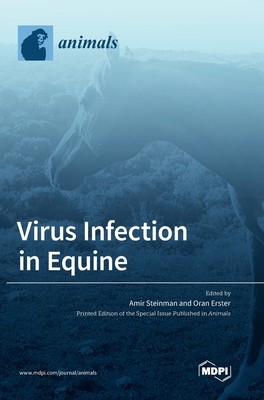
- We will send in 10–14 business days.
- Publisher: MDPI AG
- ISBN-10: 3036550860
- ISBN-13: 9783036550862
- Format: 17 x 24.4 x 1.1 cm, hardcover
- Language: English
- SAVE -10% with code: EXTRA
Virus Infection in Equine (e-book) (used book) | bookbook.eu
Reviews
Description
The increased international transportation and trade over the last few decades have increased the risk of the introduction of pathogens into new areas. Global climate change has influenced environmental conditions and the ability of pathogens to survive, and has changed the habitats of certain vectors and hosts. These processes have led to the emergence or re-emergence of various pathogens in different parts of the world, including those affecting horses. This Special Issue features some aspects regarding several well recognized as well as some new and emerging equine viral pathogens, highlighting the need for updated epidemiological data. Such surveillance is crucial for proper decision making by clinicians and by regulatory authorities. Also demonstrated by the recent global emergence of SARS-CoV-2, the development of an effective infrastructure for the rapid and effective detection and control of novel viral pathogens, as well as re-emerging ones, is essential. Horses should play an important role in such surveillance systems, not only for equine pathogens but also as sentinels to other viruses and arboviruses. As was demonstrated in several examples in this Special Issue, it is important to remember, both as clinicians and as researchers, that when facing clinical cases, even when those are common, we should remain alert to the possibility of the intrusion of unknown pathogens and, therefore, should seek a definitive diagnosis. This may allow for the early detection of emerging or re-emerging pathogens.
- Publisher: MDPI AG
- ISBN-10: 3036550860
- ISBN-13: 9783036550862
- Format: 17 x 24.4 x 1.1 cm, hardcover
- Language: English English
The increased international transportation and trade over the last few decades have increased the risk of the introduction of pathogens into new areas. Global climate change has influenced environmental conditions and the ability of pathogens to survive, and has changed the habitats of certain vectors and hosts. These processes have led to the emergence or re-emergence of various pathogens in different parts of the world, including those affecting horses. This Special Issue features some aspects regarding several well recognized as well as some new and emerging equine viral pathogens, highlighting the need for updated epidemiological data. Such surveillance is crucial for proper decision making by clinicians and by regulatory authorities. Also demonstrated by the recent global emergence of SARS-CoV-2, the development of an effective infrastructure for the rapid and effective detection and control of novel viral pathogens, as well as re-emerging ones, is essential. Horses should play an important role in such surveillance systems, not only for equine pathogens but also as sentinels to other viruses and arboviruses. As was demonstrated in several examples in this Special Issue, it is important to remember, both as clinicians and as researchers, that when facing clinical cases, even when those are common, we should remain alert to the possibility of the intrusion of unknown pathogens and, therefore, should seek a definitive diagnosis. This may allow for the early detection of emerging or re-emerging pathogens.


Reviews